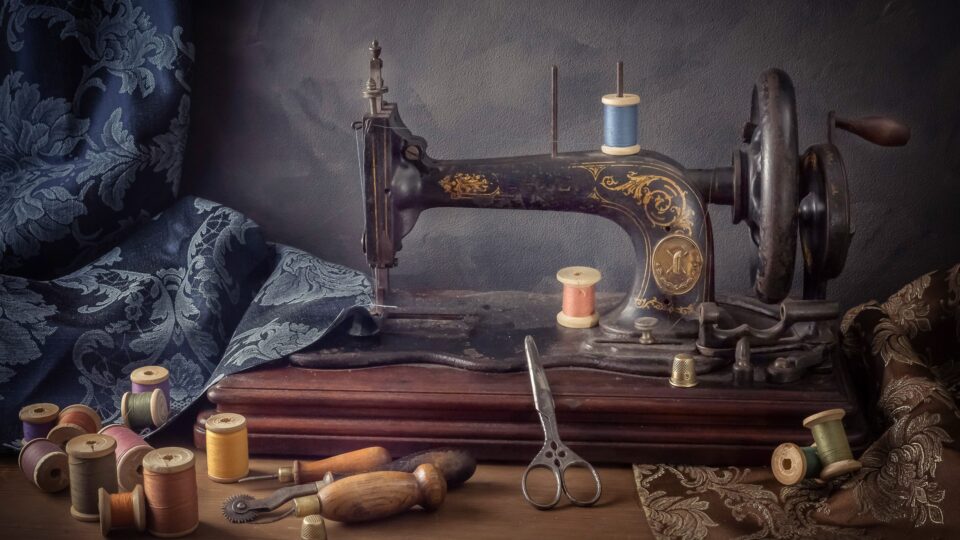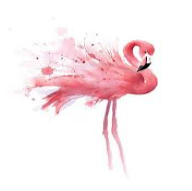Commemoration for the apparel industry “How the apparel industry became invaluable and ubiquitous.”

“You cut a length of thread, knot one end and pull the other end through the eye of a needle. You take a piece of fabric and you think about what you are going to make, what you are going to say, who it will be for and what others will be able to read from it.
And you consider what patterns and motifs you might use in this clothing. Will it have a story or will its message be told in symbols or colors – readable for future generations? Will it hold sewn promises of compassion, empathy, blessings from the heart, vision, principles and inspiration? You choose colors with care to convey specific emotions. You look through types of fabrics, your collection of adornment, the tiny glittering sequin, the box beads, the braid of jig jigging pompons and select all or some to add when the clothing is complete. Then you push your threaded needle in one side of the cloth and pull it out on the other, on and on in rhythmic sewing, until you have made something that matters: a thing of beauty and meaning, clothing that holds a spirit of you, the artist, fast within its threads”.
Clare Hunter, community textile artist and textile curator
It all began with string and home. Its invention changed the history of humanity. Once the craft of turning plant fibers into thread and twisting them to make a string was discovered, animals could be caught, tethered and domesticated; objects could be tied together and carried; fishing nets could be fashioned; babies could be cradled on their mother’s backs and women could walk further to collect plants for food or medicine. Crucially, from string came thread and from thread came cloth. It fell to women to spin the thread (yarn) and weave the cloth (fabric) because it was something they could do near or at home. It was compatible with child- rearing and cooking.
Gradually, the social impact of the apparel industry on the economy made it invaluable and omnipresent
POWER
In recent years, studies into mental health have explored the use of needlework as a panacea for mental distress and proved its efficacy to regulate mood, enhance self-esteem and encourage a rhythm of calmness. There is also lay behind the needlework a more basic human impulse: to maintain self-control, create order and exercise choice among the tumult and humiliation of the life.
FRAILTY
In the simple act of making clothing, no matter of person’s conditions, anyone finds a release from being incapacitated (deaf, mute or disabled). Artisans as such find a wordless way to communicate through the colors, patterns and shapes they select. Through the choices artisans make – angular against round, red against apricot – they express, translate, explain their inner and outer selves on the clothing. They tell of the moments of mist and clarity that formed the weave of their world and its duality.
CAPTIVITY
Imprisoned men or women stitch in their cells and discover an antidote to boredom, a retreat from the boom and bluster of prison life. Getting into art brings them into different kinds of conversations and provides social and creative stimulus. Imprisoned people, when get paid, receive not just monetary recompense but also an acknowledgment of the value of their often newly acquired skill, an appreciation of their artistry. They may not sew the decorous or decorative patchwork but rather wry and intimate expressions of their reality. Through sewing, these people can forge a different identity from a prisoner, criminal, or no-hoper.
IDENTITY
Through what people stitch and wear, they find diverse ways to assert their identity. They harness the skill and connotations of needlework to reclaim, restore and register the value of their societies that shaped them and create visible eminders of their nations’ past heritage and future possibilities.
CONNECTION
Are the textiles we keep in our homes as keepsakes just sentimental scraps of the past, or does their tactility allow us to retrieve something more than anecdote? Touch is our very first sense, the first tool we use to register and remember difference, to record heritage. The textile we keep demands to be lifted, stroked, handled. They literally keep us in touch with our past. Cloth softens with handling. It absorbs human touch and the drift of odors that surround it during its making: sweat, spices, perfume, wood smoke. Bury your face in textile and you can nose up the scents of lives far away and long ago. If it is an heirloom, it can transport you to a forgotten blend of family fragrance, it acts as a link between now and then, folding where others have folded, mending where others have mended. Lying beneath clothing, we lie where others have lain. These keepsakes are both a celebration and a commemoration of the story of other people’s lives.
PROTECTION
Traditionally in many cultures throughout the world, embroidered textiles were considered efficacious as a shield for protecting human beings. Imbued with the force of nature – the plants from which dyes have been extracted, from which thread has been spun – textiles provided a natural armory to ward off an attack. However, through needlework, greater defenses could be assembled to ensure human safety.
JOURNEY
The wellspring of beauty in clothing lies not just in the objects themselves but also in the process of their creation. The process that represents a journey of an artisan goes through, the difficulty she overcomes, the patience she practices, her labor and time. These are all gifts. The greater the challenge, the more time spent, the greater the gift she bestows.
PROTEST
The sewing itself is less important than the thought, and the time it represents. It is the latter that allows campaigners to demonstrate their depth of feeling and commitment. Whether it be tying tiny stitched banners to lampposts to alert passers-by to the iniquity of racism, or organizing a shop-drop where the message about ethical manufacture are left in the pockets of shirts in a non-ethical retail chain or making bespoke embroidered handkerchief for board members and shareholders of a company not yet committed to the living wage, the sewn campaigns might be quiet and small, but they still pack an emotional patch.
Gifts initiate a connection, and they are memorable. They elicit support through being witty, thoughtful, targeted, purposeful, and hand-made.
COMMUNITY
Community sewing projects have emotional and metaphorical currency. Much like the Chinese and Japanese idea of creating protective textiles by joining up donated cloth or collecting stitches from many different people, so community textiles are imbued with the spirits of people who create them, witnessed by others, as unique investments in, and registers of, community worth.
PLACE
Needlework can take us far away from where we are in our imagination, but it can also lead us back to where we belong. For example, quilts became one way to keep hold of Africans and African Americans. The same can go with leather belts, knives, or leather items of home décor tracing back craft traditions of Canadian immigrants from all over the world.
VALUE
There’s not much use in getting to work without really understanding why to do it. Money is never the reason, but the reward of doing. As for the needlework, it represents multiple values. Sobriety, patience, inclusiveness, visualization, solitude, creativity, and gender equality (men sewing), to name a few.
ART
Society needs the arts to grow and thrive – but there’s a much more critical reason to fund them[1]. The arts are local and relevant to the needs and wishes of local people. They help citizens to express their needs and to clothe them in memorable forms. Arts buildings lift the spirits, create symbols that people identify with, and give identity to places that may not have one.
The risk of funding the arts offers benefits far greater than the immediate gains of not funding them. The arts link society to its past, a people to its inherited store of ideas, images, and words; yet the arts challenge those links in order to find ways of exploring new paths and ventures. The arts are evolutionary and revolutionary; they listen, recall and lead. They resist the homogeneity, strengthen the individual and are independent in the face of the pressures of the mass, the bland, the undifferentiated. In a postmodern world, in which individual creativity has never mattered more, the arts provide the opportunity for developing this characteristic. The investment in the arts is so small, the return so large, that it represents value as research into ideas.
WORK
The apparel industry remains to be women-led. These women market not just the product but also the traditions they conserve. When getting together: women talk about their lives; how they can best improve their standing without rejecting or destroying precious community traditions; how they can best endow what they sew with honor; what opportunities there are for women to have independence and financial freedom. These women are the archivists of some of the needlework’s most ancient patterns and techniques. Without their labor, the needlework heritage of their culture would become extinct, as it has happened in many cultures already. These women are conserving not just traditional skills and patterns but the heartbeat of needlework itself: its emotional purpose.
VOICE
It is through needlework, voices can touch the hearts of people no matter how loud they are.
Needlework can record history, convey complex social information about people’s status, relationships, beliefs, origin, and allegiances. It can conserve memory, protecting and preserving personal and collective testimonies. It has a vital role to play in archiving tradition and telling people’s stories in a medium that carries emotional and physical meaning. Fabric and thread can convey a prayer, trace out a map, proclaim manifesto, send out a warning, bestow blessing, celebrate culture and commemorate lives lived and lost.
Lives are expressed not just through images but through texture and color, different kinds of stitches, the various processes of piecing, patching, recycling, quilting to more clearly articulate the different layers of our humanity and manifest the fabric of our lives.
Sewing is a way to mark our existence on cloth, patterning our place in the world, voicing our identity, sharing of ourselves with others, and leaving the indelible evidence of our presence in stitches held fast by our touch.
The article is based on the book of Clare Hunter “Threads of life – a history of the world through the eye of a needle”.
[1] https://www.irishtimes.com/news/why-art-matters-1.1004787
To get better in business and in life, it takes improving yourself first. Click the link for more details about “Made by woman” value-oriented marketing and management standard.
